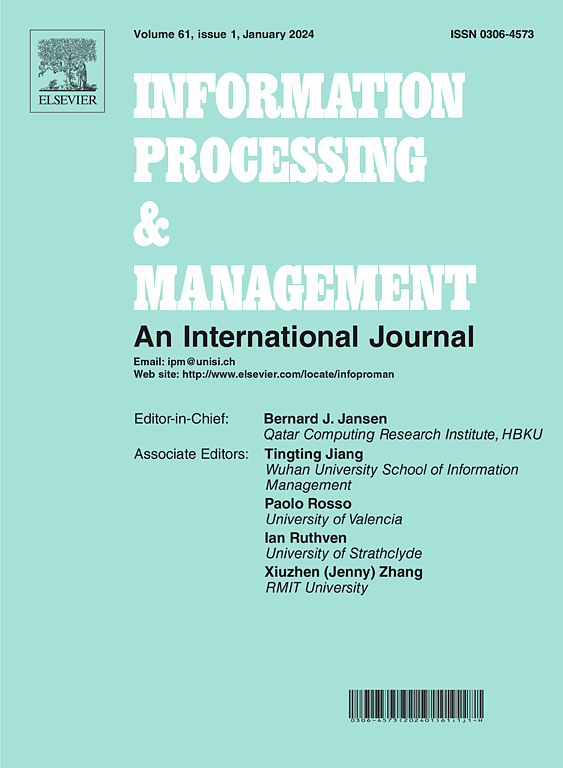False information sources detecting based on an epidemic diffusion model
IF 7.4
1区 管理学
Q1 COMPUTER SCIENCE, INFORMATION SYSTEMS
引用次数: 0
Abstract
Epidemic-based diffusion models are commonly used to locate false information sources. However, most existing models overlook the topological structure of social networks, assuming that each infected person has an equal opportunity to contact all healthy individuals. Additionally, most current source locating algorithms only consider information from infected nodes, neglecting uninfected ones. As a result, these methods often produce unsatisfactory multi-source detection results. To address these shortcomings, we propose a new epidemic diffusion model, Networked-SNIR, which incorporates topological information to more accurately describe influence propagation. We analyze the properties of information propagation under the Networked-SNIR model. To reduce computational time for extensive information propagation simulations, we present an efficient algorithm to estimate the likelihood of nodes being in different states and their infection times. We also propose a likelihood maximization-based algorithm to detect multiple sources of false information. Experimental results on real-world data show that the proposed Networked-SNIR model more accurately reflects the spread of infectious diseases in social networks compared to other models. Furthermore, experiments on seven real-world and two synthetic datasets demonstrate that, compared to baseline algorithms, the sources detected by our algorithm not only influence more observed nodes but also do so at more precise times.
基于传染病扩散模型的假信息源检测
基于流行病的扩散模型通常用于定位虚假信息源。然而,大多数现有模型忽略了社会网络的拓扑结构,假设每个感染者都有平等的机会与所有健康个体联系。此外,目前大多数源定位算法只考虑来自感染节点的信息,而忽略了未感染节点。因此,这些方法往往产生不理想的多源检测结果。为了解决这些缺点,我们提出了一种新的流行病扩散模型,即network - snir,它包含拓扑信息以更准确地描述影响传播。分析了网络- snir模型下的信息传播特性。为了减少大量信息传播模拟的计算时间,我们提出了一种有效的算法来估计节点处于不同状态的可能性及其感染时间。我们还提出了一种基于似然最大化的算法来检测多个虚假信息源。现实数据的实验结果表明,与其他模型相比,所提出的网络- snir模型更准确地反映了传染病在社会网络中的传播。此外,在7个真实数据集和2个合成数据集上的实验表明,与基线算法相比,我们的算法检测到的源不仅影响更多的观测节点,而且在更精确的时间内进行影响。
本文章由计算机程序翻译,如有差异,请以英文原文为准。
求助全文
约1分钟内获得全文
求助全文
来源期刊

Information Processing & Management
工程技术-计算机:信息系统
CiteScore
17.00
自引率
11.60%
发文量
276
审稿时长
39 days
期刊介绍:
Information Processing and Management is dedicated to publishing cutting-edge original research at the convergence of computing and information science. Our scope encompasses theory, methods, and applications across various domains, including advertising, business, health, information science, information technology marketing, and social computing.
We aim to cater to the interests of both primary researchers and practitioners by offering an effective platform for the timely dissemination of advanced and topical issues in this interdisciplinary field. The journal places particular emphasis on original research articles, research survey articles, research method articles, and articles addressing critical applications of research. Join us in advancing knowledge and innovation at the intersection of computing and information science.
 求助内容:
求助内容: 应助结果提醒方式:
应助结果提醒方式:


